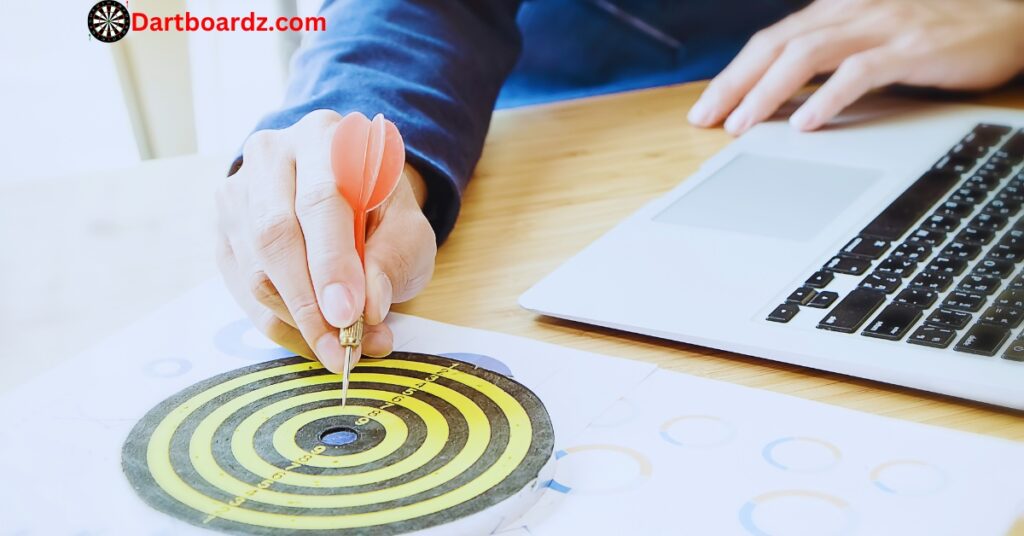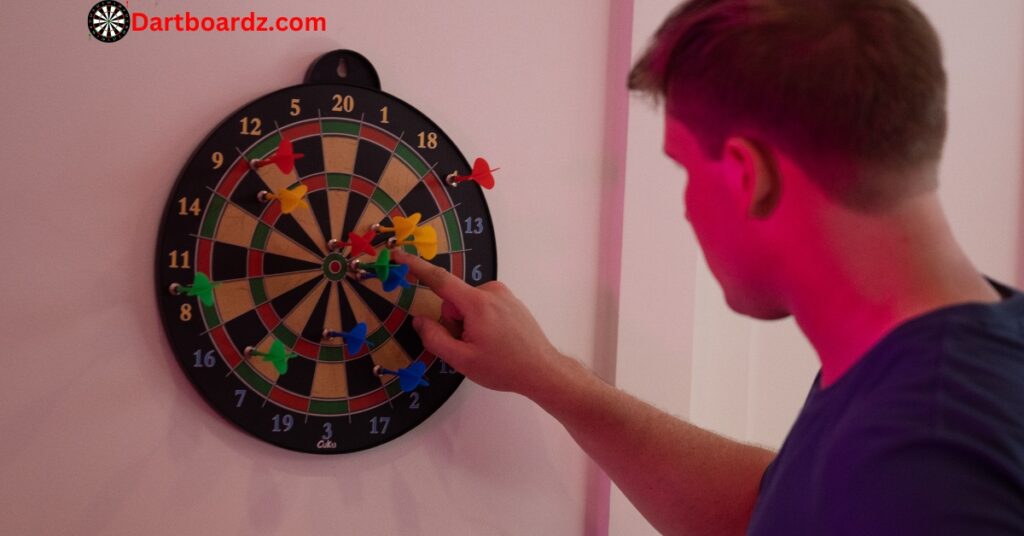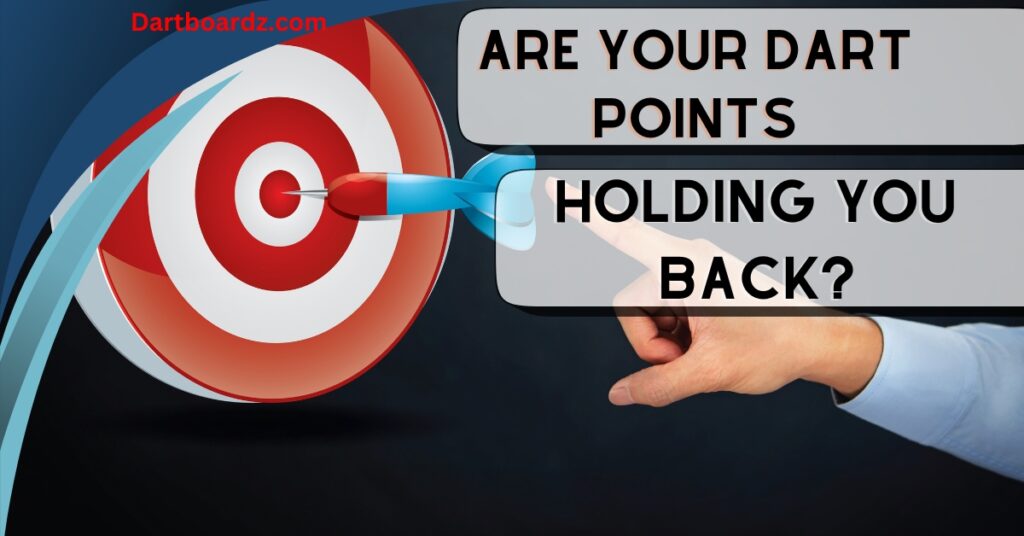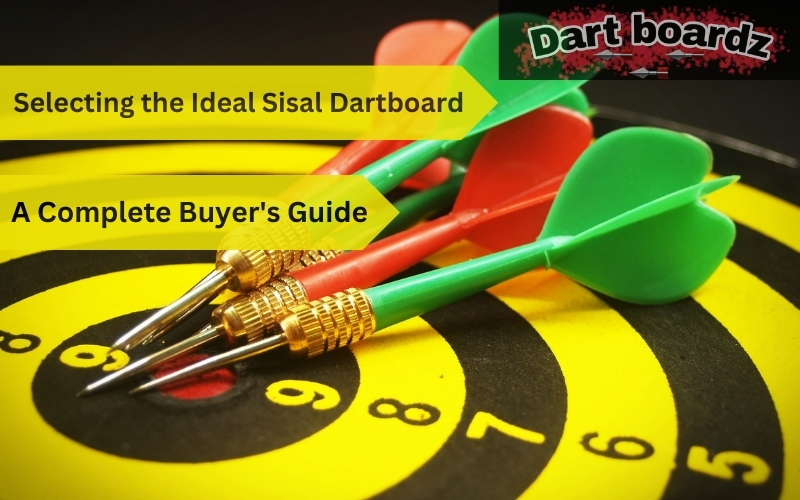Have you ever felt like your darts just aren’t sticking the way they should? You line up the perfect shot release the dart with flawless form but it bounces out or deflects off the target?
If this scenario sounds familiar you might not be looking at the culprit in the mirror. Your darts themselves particularly the points could be hindering your performance.
This article delves into the fascinating world of dart points exploring their various types materials and how they can significantly impact your game. We’ll equip you with expert tips on choosing the right points to elevate your accuracy and scoring potential.

Understanding the Anatomy of a Dart
Before diving into points specifically let’s establish a foundational understanding of a dart’s anatomy. A typical dart comprises three main parts:
The Point: This is the metal tip that makes contact with the dartboard. As discussed point selection is crucial for optimal performance.
The Barrel: This is the central cylindrical section you grip while throwing. Barrel weight diameter and grip texture significantly influence throwing style and control.
The Flight: This is the plastic component at the rear of the dart that stabilizes its flight path. Flight size and shape can affect trajectory and balance.
Understanding these components and their interplay is essential for choosing the right equipment to match your throwing style and desired outcome.

A Look at Different Types of Dart Points
The world of dart points offers a surprising variety each with unique characteristics that affect how your darts interact with the board. Here’s a breakdown of the most common types:
Steel Points (Steel Tip Darts): These are the traditional points favored in professional tournaments. They offer superior penetration into sisal dartboards promoting tighter grouping and higher scores. However steel points can damage bristle boards over time and are not recommended for use on soft-tip electronic boards.
READ NEXT: From Beginner to Pro- The Steel Tip Dartboard Odyssey
Soft Points (Soft Tip Darts): Made from plastic or nylon soft points are ideal for electronic dartboards. They prevent damage to the board’s electronic components and provide a quieter playing experience. However soft points may not penetrate sisal boards as effectively potentially leading to more bounce-outs.
READ NEXT: Soft Dart Tip Sizes: Your Essential Information Source
Brass Points: Often used as practice points due to their affordability brass points offer a good balance between weight and durability. They can be used on both sisal and electronic boards but their penetration power falls short of steel points.
Nickel-Silver Points: Offering a more premium feel than brass nickel-silver points provide a good balance between weight durability and penetration. They are a popular choice for players who want a versatile point that performs well on various board types.
Whistler Points: Designed with small holes or grooves whistler points create a whistling sound as they fly through the air. While some players find this sound distracting others use it as a focusing aid. However whistler points are generally not allowed in professional tournaments due to potential disruption.
Remember: This list is not exhaustive and there are many other specialized point types available each catering to specific playing styles and preferences.

How Point Material Affects Performance
The material your dart points are made from significantly impacts their performance. Here’s a closer look at the pros and cons of the most common materials:
Steel: The preferred material for serious players steel offers the best penetration into sisal boards leading to tighter dart groupings and higher scores. However steel points can damage soft boards and rust if not properly maintained.
Nickel-Silver: A good middle ground between steel and brass nickel-silver points offer a balance of weight durability and penetration. They are a popular choice for players who want a versatile point that performs well on various board types.
Brass: Affordable and durable brass points are often used as practice points. However they are heavier than steel and may not penetrate sisal boards as effectively.
Plastic/Nylon: The go-to material for soft tip darts plastic and nylon points are designed to prevent damage to electronic boards. However they may not penetrate sisal boards as effectively as steel or nickel-silver points.
Choosing the Right Material: When selecting point material consider the type of board you’ll be playing on most frequently. Steel is the clear winner for sisal boards while plastic or nylon is essential for electronic boards. If you play on both types of boards nickel-silver offers a versatile option.
Finding the Perfect Fit
Beyond material point length and size play a crucial role in how your darts interact with the board and your throwing style. Here’s a breakdown of their impact:
Point Length: Generally longer points offer greater penetration into the board promoting tighter groupings and potentially higher scores. However they can also be more prone to bounce-outs if they hit wires or other darts on the board. Conversely shorter points are less likely to bounce out but may not penetrate the board as deeply potentially leading to looser groupings.
Point Size: The diameter of the point also influences performance. Wider points offer more surface area for gripping the board potentially improving stability. However they can also be more likely to deflect off other darts or wires. Thinner points offer less deflection but may not grip the board as effectively.
Finding the Balance: The ideal combination of point length and size depends on your throwing style and preferences. Here’s a general guideline:
Aggressive Throwers: If you throw with a lot of force consider using slightly longer points to ensure proper penetration. However be mindful of potential bounce-outs and adjust length accordingly.
Controlled Throwers: If you favor a more controlled throwing style shorter points might be a better fit. They offer greater control and reduce the risk of bounce-outs but ensure they provide enough penetration for your desired scoring potential
Experimentation is Key: Ultimately the best way to find the perfect point length and size is through experimentation. Try different combinations and observe how they affect your grouping scoring and overall feel.

Expert Tips on Choosing the Right Dart Points
Here are some valuable tips from darting experts to help you select the ideal points for your game:
Match Your Points to Your Board: As mentioned earlier prioritize steel points for sisal boards and plastic/nylon points for electronic boards. Using the wrong type can damage the board and hinder your performance.
Consider Your Throwing Style: Aggressive throwers might benefit from longer points for better penetration while controlled throwers might prefer shorter points for better control.
Don’t Neglect Weight: Point weight can affect balance and throw feel. Experiment with different weights to find what complements your throwing style.
Grip Matters: Some points have grooved or textured surfaces that offer additional grip in the board. This can be beneficial for players who struggle with bounce-outs.
Sharpen Up! Steel points tend to dull over time. Regularly sharpening them ensures optimal penetration and scoring potential https://www.youtube.com/watch?v=ynbPOrN-hfs.
By following these tips and experimenting with different point options you’ll be well on your way to finding the perfect match for your throwing style and desired outcome.
Additional Factors for Optimal Dart Performance
While points are undeniably important they are just one piece of the puzzle. Here are some additional factors to consider for optimal dart points performance:
Barrel Weight and Grip: The weight and grip texture of the barrel significantly impact throwing feel and control. Experiment with different barrel options to find what complements your hand size and throwing style https://www.shotdarts.com/blog/the-ultimate-guide-to-choosing-the-right-dart-barrel.
Flight Size and Shape: The size and shape of the flight influence the trajectory and stability of your dart points. Consider experimenting with different flight options to achieve the desired flight path and balance.
Practice Makes Perfect: Regardless of your equipment consistent practice is key to improving your darts game. Dedicate time to honing your throwing technique and building muscle memory.
Conclusion:
Dart points often overlooked play a crucial role in your performance. By understanding the different types materials and how they impact your throw you can make informed choices that elevate your game. Remember to experiment prioritize points that match your board type and consider your throwing style when making your selection. With the right points and dedication to practice you’ll be well on your way to sticking those darts with pinpoint accuracy and achieving your darting goals.
FAQs:
Are my dart points affecting my game?
Yes! The right dart points can improve accuracy and scoring. This guide explores types materials, and how they impact your throw.
Steel vs. Soft Tip Dart Points: Which do I need?
Steel points are for sisal boards, offering better penetration. Soft tip points, made of plastic/nylon, are for electronic boards to prevent damage.
How do dart point lengths affect mMy darts keep bouncing out.
Longer points offer better penetration but might bounce out more. Shorter points provide control but may not score as well. Experiment to find your fit!
My darts keep bouncing out. Is it the dart points?
It could be! Wrong point length, material (steel vs. plastic/nylon), or throwing technique can cause bounce-outs. Read our guide for solutions dart points.
How can I improve my dart game with the right points?
This guide unlocks the secrets of dart points and how they affect your throw. Learn how to choose the right ones to become a dart-throwing champion!




